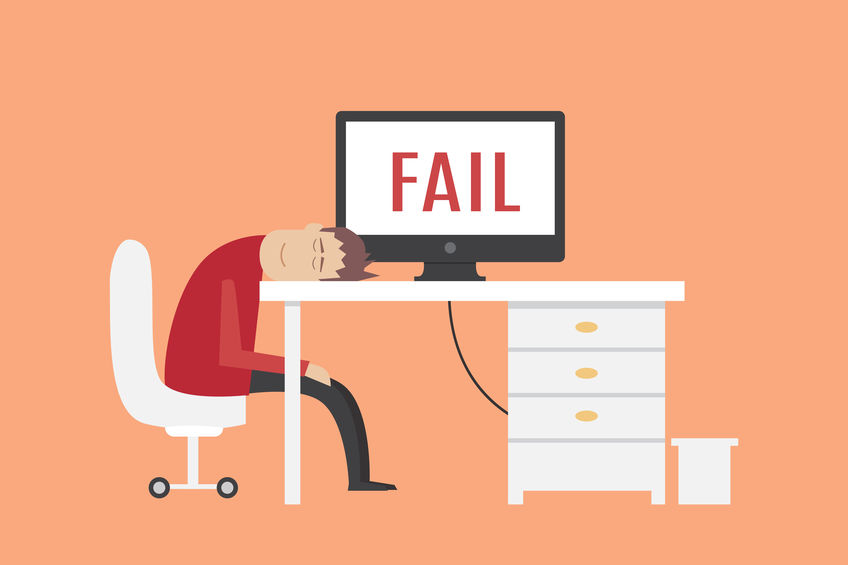 Submitted by Adi on
Submitted by Adi on

Image by Denys Haidamashchuk @ 123rf.com
Equanimity in the being demands that if we know to work, we must know how not to work. That does not mean a lapse into inertia but a poise of silence, peace and timeless stability that facilitates creativity and supports the play of the outer being in time.
“To be able to work with full energy is necessary — but to be able not to work is also necessary (1).” - Sri Aurobindo
when I started clinical work as a psychiatrist, I gradually recognised the importance of that statement.
Work at the level of the physical mind
There were subjects who were too perfectionist and were labelled as sporting obsessive personality disorder. They functioned properly if they were given time-bound tasks. In fact they excelled in work, perfectly executed tasks with great responsibility and often completed the unfinished tasks of their colleagues too. But if they were not placed under pressure to perform their idle mind would go on ruminating unnecessary thoughts. They would try to remove unwanted thoughts but could not do it. This frustrated them and often led to depression. I realised that they were seeking an escape from their unwanted ruminations by taking refuge in work where they could shift their focus to a productive effort. I took up Sri Aurobindo’s cue and started counselling such subjects that to be steady both during work and without work was needed for establishing equanimity in the being.
It is interesting that the habitual ruminating thoughts of the obsessive-compulsive spectrum are a characteristic of what Sri Aurobindo described as the physical mind. It is that part of the mind that is enmeshed in sensory schemata and regulates the physical consciousness where our habits are scripted. If one is always poised in the physical mind, work is stereotyped. At an optimal point in time one has to break the rigidity of the physical mind to shift to a higher poise of consciousness when work can start to be creative. As Sri Aurobindo pointed out, “Skill in works will come when there is opening of the physical mind and the body (2)”.
There are two perspectives in this statement. Firstly, one has to break the boundaries of the physical mind to shift to a higher poise so as to infuse creativity and newness in what so long was a habitual and stereotyped work. Secondly, unless one learns to relax the body, one cannot effect a shift in the focus of consciousness that is needed to rise above habitual thinking.
It is significant that decades after Sri Aurobindo observed how rising above the rigidities of the physical consciousness was needed for developing skill in works, progressive muscular relaxation became an important tool to allay stress in workaholic executives. It is also an important therapeutic tool in alleviating the stress of obsessive subjects.
Work and the vital mind
Then there was another group of subjects with high vitality who were always reeling under the pressure to work, work and work. They seemed to have inexhaustible energy and were compelled to design, formulate and execute mighty projects. This is the characteristic of the vital mind. Typically such projects were time-bound which meant that they were always competing with time!
Such dynamism gets inevitably linked with the ego and that further complicates the matter. With the assertion of the ego comes a host of other boosting variables — competition, jealousy, consumerism, greed and exploitation.
Well, work is necessary and great projects are needed to serve civilization. However yogic insight reveals that work of great vitality is also vulnerable to great vital lapses because the vital (the repertoire of life-energy, emotions and passions) is usually untransformed.
There is another problem that is overlooked. Work of mighty magnitude comes with a price for the perpetrators of work-culture are prone to succumb to stress and the plethora of ailments that follow.
Work could also be done from a poise of ‘no-work’. That sounds strange but is a great spiritual reality. If the outer dynamism is balanced by an inner poise of silence and peace — a poise that is linked with timelessness, then the work at the outer level would not lead to a disharmony of the being that precipitates stress-linked ailments. Instead of viewing time as a competitor, time could be made a friend!
The Mother explains beautifully:
“Men have a feeling that if they are not all the time running about and bursting into fits of feverish activity, they are doing nothing…. This illusion of action is one of the greatest illusions of human nature. It hurts progress because it brings on you the necessity of rushing always into some excited movement…
“Stand back from your action and rise into an outlook above these temporal motions; enter into the consciousness of Eternity. Then only you will know what true action is (3).”
To enter into the consciousness of Eternity, one has to enter the deeper ranges of the being behind the surface personality, access the inner being that is in communion with the cosmic consciousness. This inner being is not supported by the ego but by the soul-principle that changes the whole denouement of life and work.
Creativity and isolation
I came across another group of people who had led a very fruitful work-life and now in their retirement were feeling bored, isolated and alienated. There was the particular group of people who had taken voluntary retirement in their early fifties and seemed to suffer more. Firstly, they had retired at an age where they could have given the most mature contribution to their work.
Secondly, they never knew what to do with life after retirement for they had been so obsessed with work that they had never introspected, never discovered their hidden potentials which they could have developed during retirement. In short, they never knew themselves.
Thirdly they had expected that they would be comfortable with their post-retirement benefits. But life does not run a smooth course and unexpected catastrophes can rob a lot of assets preserved for a secure future.
It is thus necessary that one must discover one’s creative potentials and this is a work that should not be left to be pursued in old age. Unless one knows one’s creative assets one cannot live a fruitful retired life. The creative mind is as important as the productive mind.
Work and the pandemic
During the ongoing pandemic (of Covid-19) when people are forced to stay indoors, I am constantly being flooded with queries from people who seem to be frustrated that they cannot work. Adults forget that it is not they who cannot go to work are the ones to be affected most. Actually it is the children who cannot play with their friends and run in the open who suffer more than their parents. Play itself is a creative pursuit in children who spontaneously develop enormous variations in games. Deprived of creative play they have to attend online classes conducted by impersonal teachers without the emotional support of peer-groups — something that is more traumatic than the adults who cannot go their work-places.
One should also learn to spend vibrant periods of ‘no-work’ where one does not lapse into laziness or inertia but can discover the wholeness and beauty of life behind all externalities. This is needed both for adults and children. The pandemic can be seen to provide an excellent opportunity for introspection, self-development, creativity and personal growth.
What is work?
I was invited to speak to a group of highly placed officers who had retired from a famous industrial plant. These were people who had run the plant and they had been allotted huge bungalows with spacious gardens during their service tenure. Now after retirement they felt impoverished. They told me that they were proud to be occupied with work during their service and they now felt that life was meaningless in retirement. I asked them, “Have you only worked and worked?” They told that their commitment to work was paramount. I asked them, “You have lived in bungalows with big gardens and had gardeners who worked for you, all supported by your company. Have any of you woken up at 3 am to stand and observe how a bud in your own garden blooms into a flower? At least once in the 20 or 30 years you have lived there? Why were you given houses with gardens and gardeners? You never had time to see the beauty of a flower blooming in your own garden? Is not that also a work? You have worked for your company, that was great but at the end that was a compromise because you worked for someone else. Are we not to work for ourselves too? For our aesthetic mind, for our inner being and for our soul deep inside that carries the Truth of our being?” They did not reply. Some of them hung their heads in shame.
Epilogue
We can now understand Sri Aurobindo’s recommendation that one must know not only to work but also not to work. And he tells that the ability of not to work must be cultivated in our personality. This means that we are not called to lapse into inertia. We are called upon to develop a poise of inner being where peace and silence and inaction can support a life of dynamism and action. Strength that emanates from such an inner poise is more powerful than the strength in the outer being. It is the soul-strength that rules an eventful life. It is the impersonality that allows the personality to act effortlessly.
Dr. Soumitra Basu
http://www.namahjournal.com/doc/Actual/To-work-or-not-to-work-vol-28-iss-3.html
References
1. Sri Aurobindo. The Complete Works of Sri Aurobindo, Volume 29. Pondicherry: Sri Aurobindo Ashram Trust; 2013, p. 274.
2. Ibid., p. 285
3. The Mother. The Collected Works of the Mother, Volume 3. Cent ed. Pondicherry: Sri Aurobindo Ashram Trust; 1977, pp. 66-68.
- 379 reads